We are pleased to provide our newest blog entry, “Frequency and Waveform: An Electroculture Technique.” Discover the amazing interplay between frequencies and waveforms in this cutting-edge farming technique as we delve into the exciting world of electroculture. Learn how adjusting these factors may improve plant growth, maximise harvests, and transform sustainable farming techniques. We’ll walk you through this thrilling adventure of utilising nature’s potential, from the science underlying it to practical implementations. Join us as we reveal the exhilarating way to greener and more plentiful harvests, whether you’re an experienced farmer, an inquisitive enthusiast, or a scientific adventurer. Together, let’s revitalise your knowledge!
What is Frequency and Waveform Technique?
The Frequency and Waveform Technique in Electroculture is a significant scientific achievement in the field of agricultural innovation that uses the intricate dance of frequencies and waveforms to improve plant growth and productivity. This method, at its heart, makes use of electric currents to promote and enhance plant growth.
Frequency refers to the number of cycles of the electrical current per second. Low frequencies, such as 1-10 Hz, are known to promote root growth. Medium frequencies, such as 10-100 Hz, are known to promote leaf growth. High frequencies, such as 100-1000 Hz, are known to promote flowering and fruiting.
Waveform, the shape of the electric signal, and frequency, which refers to the number of oscillations per unit of time, are intertwined in a delicate symphony. Researchers and farmers have unlocked the power of nature by carefully adjusting these parameters.
This method improves plant health by speeding up nutrient intake as well as root growth and germination. Waveform refers to the shape of the electrical current. Sinusoidal waveforms are the most common type of waveform used in electroculture. Square waveforms are also effective, but they can be more damaging to plants.
Electroculture is the practice of using electrical currents to stimulate plant growth. The frequency and waveform of the electrical current can have a significant impact on the results of electroculture.The ideal frequency and waveform for electroculture will vary depending on the plant species and the desired results. However, in general, low frequencies and sinusoidal waveforms are a good starting point.
Equipment Required In Frequency and Waveform Technique
Picture a realm where plants thrive and flourish, not just surviving, but thriving in ways that seem almost magical. This is the captivating promise of the Frequency and Waveform Technique in Electroculture, a pioneering approach that brings together science and nature in a symphony of growth. As we embark on this electrifying journey, let’s delve into the essential equipment that paves the way for this remarkable agricultural technique.
- Frequency Generator: At the heart of this technique lies the frequency generator, a device akin to a conductor in an orchestra. It orchestrates specific frequencies that resonate with plants, awakening hidden potentials within them.
- Waveform Generator: Just as a composer shapes a melody, a waveform generator crafts electric waveforms. These waveforms, like musical notes, influence plant responses, nudging them to dance to a new tune of growth.
- Electrodes: Think of these as nature’s connectors. Electrodes, akin to plant messengers, transmit the orchestrated electric signals to the plants, initiating a harmonious conversation between technology and nature.
- Power Source: Providing the energy for this botanical symphony, the power source ensures a steady and controlled flow of electric signals, akin to an unseen current of life.
- Monitoring Marvels: Much like a gardener’s watchful eye, monitoring tools such as oscilloscopes and multimeters keep a keen lookout on the electrical performance, ensuring that the plants receive the right signals at the right time.
- Plant Health Sentinels: Imagine having tiny guardians caring for each plant’s well-being. Plant health sensors, equipped to measure moisture, pH levels, and nutrient content, ensure that the environment remains conducive to growth.
- Safety Guardians: In this electrified garden, safety takes center stage. Grounding systems and surge protectors shield both plants and caretakers from any unexpected surges.
- Data Recorders: Like chroniclers of growth, data recording devices meticulously document the effects of different frequencies and waveforms, aiding in the fine-tuning of this innovative technique.
- Research Alchemy: Peer into the secrets of the plant world with research instruments – microscopes and spectrometers – enabling us to witness the intricate responses and transformations up close.
- Guiding Lights: As we navigate this uncharted terrain, educational resources act as guiding lights. They illuminate the path, ensuring that practitioners grasp the technique’s nuances and potential.
These devices come together in the Frequency and Waveform Technique of Electroculture to produce a breath-taking work of art that combines innovation with nature. It’s a symphony in which waveforms and frequencies join together to create a melodic homage to growth and in which technology and flora waltz in perfect harmony. We are n the verge of an agricultural revolution as we embrace this fusion of science and nature, one in which plants are fed by the magic of waveforms and the force of frequencies, thriving instead of merely surviving.
Get Best Wave Form Generator From here, Choose from Below...
Procedure For Frequency and Waveform Technique
A Step-by-Step Guide: Navigating the Path of the Frequency and Waveform Technique in Electroculture
In the enchanting realm of agriculture, where innovation and nature intertwine, the Frequency and Waveform Technique in Electroculture stands as a beacon of promise. This captivating method involves a choreography of frequencies and waveforms, harmonizing technology and plant life to unlock new dimensions of growth. Let’s embark on a journey through its intricate procedure, unwrapping the steps that lead to a flourishing harvest.
- Preparation is Key: Just as a painter readies their canvas, set the stage for electroculture. Ensure a suitable environment, well-nourished soil, and healthy plants as the foundation.
- Select the Frequencies: Like selecting musical notes, choose frequencies that resonate with the specific plant species. Research and experimentation guide this selection, aiming to trigger desired growth responses.
- Craft the Waveforms: Shape the electric signals like an artist crafting a sculpture. Tailor waveforms to influence the plant’s physiology, taking cues from nature’s rhythm.
- Electrode Placement: Introduce the electrodes, the messengers of this symphony. Strategically position them near the roots, allowing the electric signals to gently interact with the plant’s life force.
- Initiate the Current: Power on the frequency and waveform generators, commencing the dance of electrons. This orchestrated flow of electricity begins a subtle conversation between technology and nature.
- Monitor and Adjust: Just as a conductor fine-tunes an orchestra, keep a vigilant eye on the process. Utilize monitoring tools to ensure the right frequencies and waveforms are coursing through the plants.
- Record and Analyze: Capture the unfolding story. Document plant responses, growth patterns, and physiological changes. Through meticulous recording, insight emerges, guiding future steps.
- Adapt and Refine: Nature is a dynamic partner. Observe how the plants respond and adapt the frequencies and waveforms accordingly. Flexibility and refinement are the brushes that paint success.
- Time and Patience: Cultivate patience, for this is a journey that unfolds gradually. The electrifying transformation takes time, and nurturing the plants with care is essential.
- Harvest the Rewards: As the final crescendo approaches, witness the fruits of your labor. Vigorous growth, enhanced yields, and thriving plants stand as the testament to the harmonious alliance of frequencies and waveforms.
- Continue the Exploration: The world of electroculture is an ever-evolving canvas. Keep experimenting, researching, and learning, delving deeper into the nuances of frequencies and waveforms.
With proper care and use, electroculture can be a safe and effective way to boost the growth and productivity of your plants.
Buy Our Handcrafted Electroculture eBook Now…
Here are some additional tips for using frequency and waveform technique in electroculture:
- Use the right frequency and waveform for the plant species you are growing. Different plant species respond differently to different frequencies and waveforms. Do some research to find out what works best for the plants you are growing.
- Start with a low frequency and gradually increase it until you see the desired results. Too much electrical current can be harmful to plants.
- Monitor the plants closely for any signs of stress. If you see any signs of stress, reduce the frequency or waveform of the electrical current.
- Experiment with different frequencies and waveforms to find what works best for your plants. Every plant is different, so what works for one plant may not work for another.
The Frequency and Waveform Technique of Electroculture combines art and science in its execution. It is a symphony where waveforms and frequencies combine to create a masterpiece of progress. As you proceed down this road, keep in mind that you are more than simply a cultivator; you are directing plants towards a peaceful and prosperous future by orchestrating nature’s symphony. Step into this exhilarating world, then, with invention and curiosity as your compass, and watch your garden bloom in ways that defy expectation.
With a little experimentation, you can use frequency and waveform technique to boost the growth and productivity of your plants.
Hydroponics Plant System
Benefits Of Frequency and Waveform Technique
Amidst the sun-kissed fields and the rustling leaves of an orchard, a silent revolution is taking root. The Frequency and Waveform Technique in Electroculture is rewriting the rules of agricultural prowess, offering a harmonious blend of technology and nature. As we journey through the lush landscapes of this innovative approach, let’s uncover the captivating benefits that await those who dare to harness its power.
- Accelerated Germination: Like a gentle lullaby, the carefully curated frequencies and waveforms coax seeds to awaken sooner, nurturing a swifter germination process. This rapid start sets the stage for robust growth.
- Enhanced Root Development: Beneath the soil’s surface, the roots respond to the electric signals by branching out more vigorously. The technique encourages a web of nutrient-absorbing extensions, fortifying plants from the ground up.
- Optimized Nutrient Uptake: Nature’s conduits, the plant’s roots, become more receptive to nutrients in the soil. They absorb essential elements with greater efficiency, fostering healthier foliage and blossoms.
- Improved Plant Health: Picture plants brimming with vitality, their leaves unfurling in vibrant shades. The technique bolsters the plant’s overall health, making them more resilient against pests and diseases.
- Increased Yield Potential: In this botanical symphony, the yields crescendo. Enhanced root systems and nutrient absorption lead to more robust plants, yielding bountiful harvests that exceed traditional expectations.
- Resource Efficiency: With improved nutrient uptake, plants require less fertilization, reducing the environmental footprint. The technique’s precision ensures resources are used optimally, paving the way for sustainable cultivation.
- Climate Resilience: As climate change challenges traditional agricultural methods, the Frequency and Waveform Technique emerges as a steadfast ally. Its ability to nurture plants in controlled environments offers a shield against unpredictable conditions.
- Reduced Chemical Dependency: The technique’s holistic approach diminishes the need for synthetic chemicals. With healthier plants naturally warding off pests, the reliance on pesticides diminishes, fostering a cleaner ecosystem.
- Shortened Growth Cycles: Time bends to the rhythm of the frequencies and waveforms. The technique has the potential to expedite growth cycles, allowing for quicker turnover and more frequent harvests.
- Innovation and Discovery: Embarking on this electrifying journey opens doors to endless innovation. Researchers and practitioners continually explore novel frequencies and waveforms, unraveling the mysteries of plant responses.
- Aesthetic Transformation: Beyond the science, witness the visual enchantment. The technique can lead to more vibrant flowers, lusher foliage, and an overall aesthetic transformation that enchants both cultivators and admirers.
The advantages of the Frequency and Waveform Technique of Electroculture cascade together like notes in a symphony, blending to form a tune of plenty and sustainability. A greener future—one in which technology and nature converge in a dance that nurtures, enriches, and empowers—is being created as we foster a new awareness of the potential inside plants. So enter this garden of possibilities where waveforms and frequencies tell a story of growth that speaks to the heart and the earth.
Check Out This Amazing Electroculture Tools by Clicking Below...
Final Words
As we close the book on “Frequency and Waveform: An Electroculture Technique,” we find ourselves at a crossroads of innovation and agricultural growth. The symphony of frequencies and waveforms has shown a harmonic partnership between human intellect and the natural world’s intrinsic wisdom.
Throughout this enthralling trip, we have seen the significant impact of this technique—accelerating germination, encouraging strong root growth, improving plant health, and redefining yield potential. It demonstrates the incredible potential that exists in human capacity to decipher and harmonise with nature’s complicated rhythms.
Let us take the music of potential with us as we leave these pages. Let us embrace the electroculture symphony as a trumpet call to reinvent the future of agriculture—one in which technology and environment coexist in perfect harmony. We become stewards of a greener, more plentiful planet with each seed sowed, plant tended, and harvest gathered, led by the resonant frequencies and harmonic waveforms that resound through the fields of invention.
Get more accurate guidence for ELECTROCULTURE from its textbooks, Select yours now by clicking below..


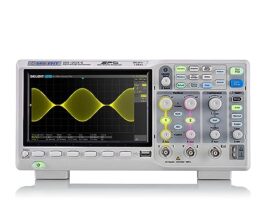

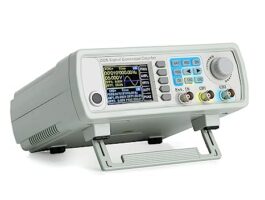

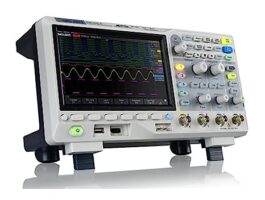

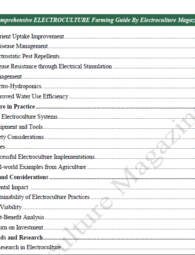

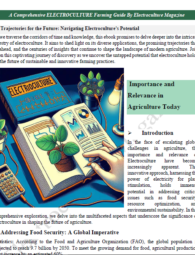
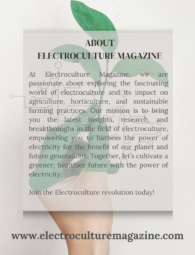






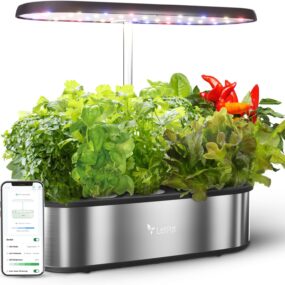









![Electroculture Bible: [7 IN 1] by Rick Croppield Electroculture Bible: [7 IN 1] by Rick Croppield](https://electroculturemagazine.com/wp-content/uploads/2023/08/B0C47Q56RC.01._SCLZZZZZZZ_SX500_-200x290.jpg)

![Electroculture Bible: [5 IN 1]: by Benjamin Foster Electroculture Bible: [5 IN 1]: by Benjamin Foster](https://electroculturemagazine.com/wp-content/uploads/2023/08/51XVYHHWHfL._SX384_BO1204203200_-200x290.jpg)

